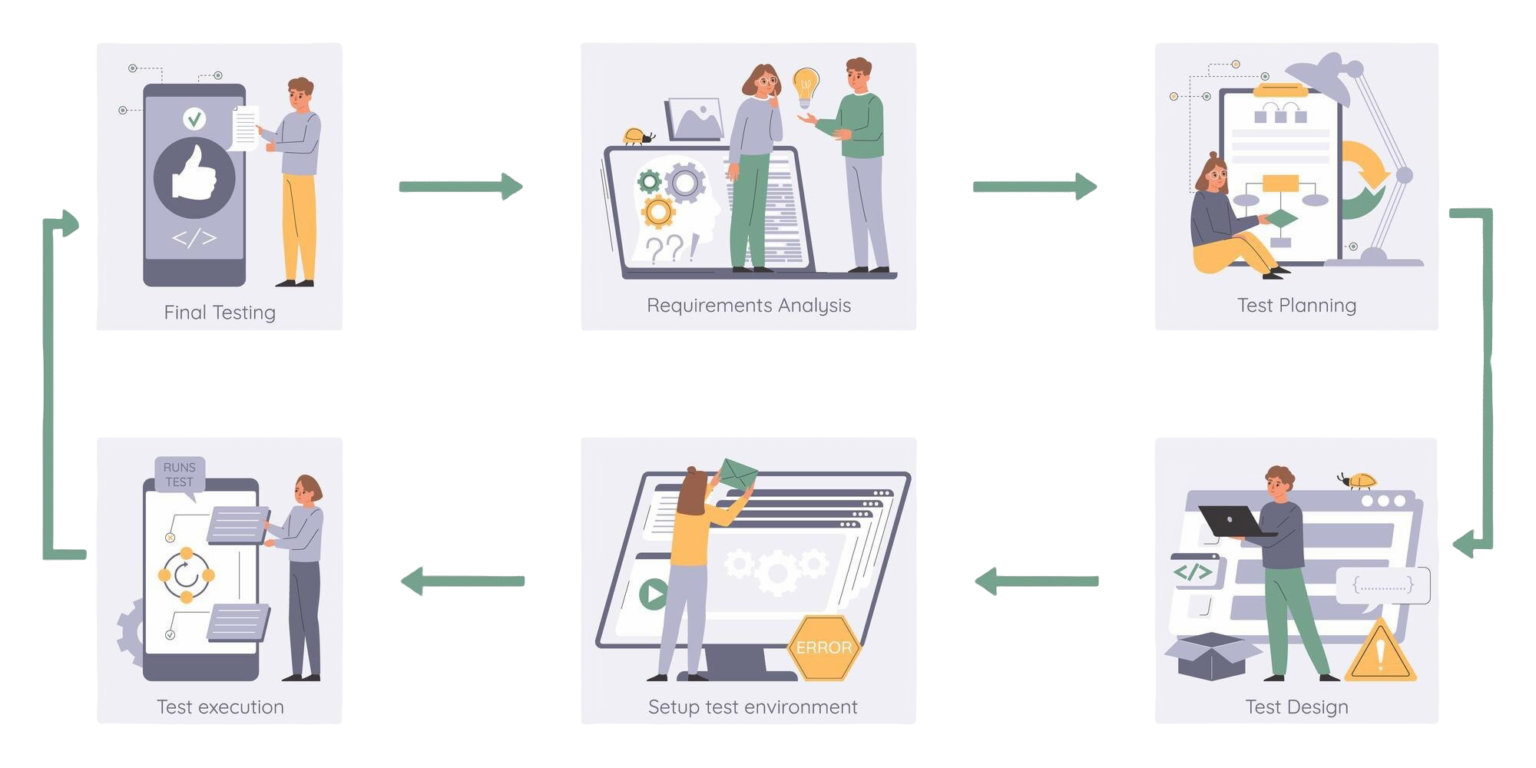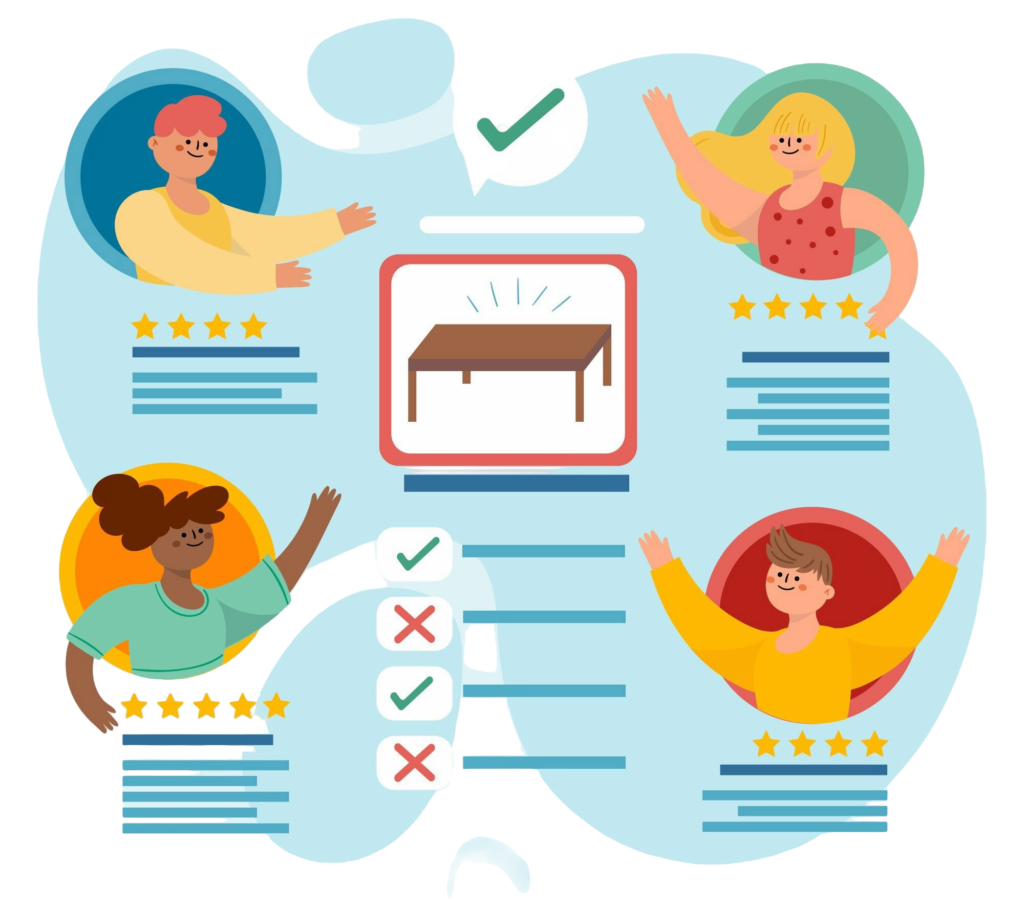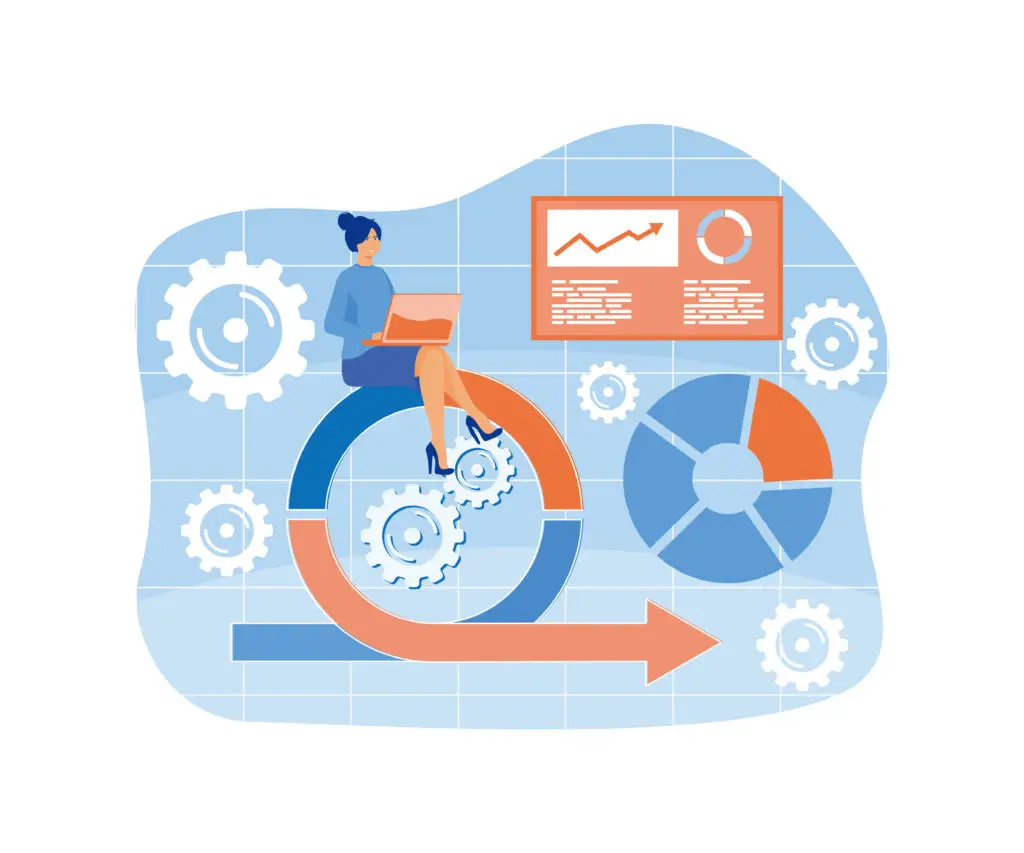In today’s fast-paced digital world, software applications are ubiquitous. They power everything from our smartphones to critical infrastructure. Ensuring the quality and reliability of these applications is paramount. This is where the Software Testing Life Cycle (STLC) comes into play.
The STLC is a systematic and structured approach to testing software applications. It defines a series of well-defined phases that guide the testing process, from initial planning to final closure. By adhering to the STLC, software development teams can enhance product quality, reduce risks, and ultimately deliver a superior user experience.
What is Software Testing Life Cycle?
The Software Testing Life Cycle (STLC) is a framework that outlines the various stages involved in testing a software product. It’s a crucial component of the overall software development process and serves as a roadmap for testing activities. The STLC ensures that testing is conducted efficiently and effectively, leading to the identification and resolution of defects early in the development cycle.
Importance of STLC in Software Development
The STLC plays a vital role in the success of any software development project. Here are some key benefits:
➤ Improved Software Quality: By systematically identifying and addressing defects, the STLC helps deliver high-quality software that meets user expectations and business requirements.
➤ Reduced Costs: Early detection of defects through the STLC can significantly reduce the cost of fixing them later in the development cycle. Fixing bugs in the early stages is generally less expensive and time-consuming than addressing them after deployment.
➤ Enhanced Customer Satisfaction: High-quality software leads to happy customers. Satisfied customers are more likely to use the product, provide positive feedback, and become loyal brand advocates.
➤ Increased ROI: By delivering a robust and reliable product, the STLC contributes to a higher return on investment (ROI) for the business.
➤ Risk Mitigation: The STLC helps identify and mitigate potential risks associated with software development and deployment. It allows teams to proactively address issues and prevent costly failures.
➤ Improved Team Collaboration: The STLC promotes better communication and collaboration among different teams involved in the software development process, such as developers, testers, and project managers.

Phases of the Software Testing Life Cycle
The STLC typically consists of the following phases:
1. Test Planning:
This is the initial phase where the scope of testing is defined. Key activities include:
Identifying testing objectives and goals.
Defining the testing strategy and approach.
Allocating resources and creating a testing budget.
Preparing a detailed test plan that outlines the testing activities, timelines, and deliverables.
The test plan serves as a roadmap for the entire testing process and ensures that all testing activities are aligned with the project goals.
2. Test Analysis and Design:
In this phase, test cases are designed based on the requirements and specifications of the software. Key activities include:
Reviewing the software requirements and specifications.
Identifying test scenarios and test cases.
Creating test data for testing different scenarios.
Designing test scripts for automated testing.
The goal is to create comprehensive test cases that cover all aspects of the software functionality.
3. Test Implementation and Execution:
This is the phase where the actual testing is carried out. Key activities include:
Setting up the test environment.
Executing test cases manually or using automated tools.
Logging defects and tracking their resolution.
Retesting fixed defects to ensure they have been resolved correctly.
Test execution involves running the tests and verifying the actual results against the expected results.
4. Evaluating Exit Criteria and Reporting:
This phase involves evaluating the test results and determining whether the testing objectives have been met. Key activities include:
Analyzing test results and identifying any defects.
Preparing test reports that summarize the testing activities and results.
Evaluating the effectiveness of the testing process.
Determining whether the software meets the specified quality standards and is ready for release.
Exit criteria are predefined conditions that must be met before the software can be released.
5. Test Closure Activities:
This is the final phase of the STLC where the testing activities are formally closed. Key activities include:
Archiving test artifacts, such as test plans, test cases, and test results.
Analyzing lessons learned and identifying areas for improvement in the testing process.
Conducting a post-release review to assess the effectiveness of the testing activities.
Test closure activities help to ensure that the testing process is documented and that lessons learned are captured for future projects.
Benefits of STLC
Following the STLC process offers numerous benefits:
-
Improved Software Quality: By systematically identifying and fixing defects, the STLC helps deliver high-quality software that meets user expectations and business requirements.
-
Reduced Costs: Early detection of defects can significantly reduce the cost of fixing them later in the development cycle. Fixing bugs in the early stages is generally less expensive and time-consuming than addressing them after deployment.
-
Enhanced Customer Satisfaction: High-quality software leads to happy customers. Satisfied customers are more likely to use the product, provide positive feedback, and become loyal brand advocates.
-
Increased ROI: By delivering a robust and reliable product, the STLC contributes to a higher return on investment (ROI) for the business.
-
Risk Mitigation: The STLC helps identify and mitigate potential risks associated with software development and deployment. It allows teams to proactively address issues and prevent costly failures.
-
Improved Team Collaboration: The STLC promotes better communication and collaboration among different teams involved in the software development process, such as developers, testers, and project managers.
Challenges in Implementing STLC
While the STLC offers significant benefits, there can be challenges in its implementation:
-
Resistance to Change: Introducing a structured testing process like the STLC can sometimes face resistance from team members who are accustomed to working in a less formal manner.
-
Lack of Resources: Adequate resources, including budget, personnel, and tools, are essential for effective STLC implementation.
-
Changing Requirements: Frequent changes in requirements can disrupt the testing process and require adjustments to the test plan.
-
Limited Time: In fast-paced development environments, there may be pressure to release software quickly, which can lead to compromises in the testing process.
-
Skill Gap: Lack of skilled testing professionals can hinder the effective implementation of the STLC.
"Adopting Shift Left is more than a process change—it's a mindset shift that turns every challenge into an opportunity to build quality from the ground up. Embrace collaboration, bridge skill gaps, and choose the right tools to turn resistance into resilience."
Rishi Gaurav, Vice President
Conclusion: Adopting STLC for Better Quality Assurance
The STLC is an indispensable framework for ensuring the quality and reliability of software applications. By following the STLC, software development teams can improve their testing processes, reduce risks, and deliver high-quality products that meet user expectations and business objectives.
While there may be challenges in implementing the STLC, the benefits far outweigh the drawbacks. By adopting a structured and systematic approach to testing, organizations can gain a competitive edge in today’s fast-paced digital world.
Remember: The STLC is not a one-size-fits-all solution. It needs to be adapted and tailored to the specific needs and requirements of each software project. By continuously evaluating and improving the STLC process, organizations can ensure that they are delivering the highest quality software possible.
This blog post provides a comprehensive overview of the Software Testing Life Cycle. It covers the key concepts, phases, benefits, and challenges associated with the STLC. By understanding and implementing the STLC, software development teams can significantly enhance the quality of their software products and improve their overall success.
Related Frequently Asked Questions
Q. What are the different types of software testing?
There are various types of software testing, including functional testing, non-functional testing, and maintenance testing.
-
-
- Functional testing verifies that the software functions as per the specified requirements. This includes unit testing, integration testing, system testing, and acceptance testing.
- Non-functional testing evaluates aspects like performance, security, usability, and compatibility. This includes performance testing, security testing, usability testing, and compatibility testing.
- Maintenance testing is performed after the software is deployed to ensure its continued functionality and reliability. This includes regression testing, smoke testing, and sanity testing.
-
Q. What are the best practices for software testing?
Some best practices for software testing include:
-
-
- Early involvement of testers: Involve testers early in the development process to identify and address potential issues proactively.
- Test automation: Automate repetitive tests to improve efficiency and reduce the risk of human error.
- Risk-based testing: Prioritize testing efforts based on the identified risks associated with the software.
- Continuous testing: Integrate testing activities throughout the entire development lifecycle.
- Use of appropriate tools: Utilize testing tools to support the testing process and improve efficiency.
- Regularly review and improve the testing process: Continuously evaluate the testing process and identify areas for improvement.
-
Q. How can I improve my software testing skills?
To improve your software testing skills, you can:
-
-
- Gain relevant certifications: Obtain certifications such as ISTQB (International Software Testing Qualifications Board) to demonstrate your expertise.
- Participate in online courses and tutorials: Learn from online resources and tutorials to enhance your knowledge and skills.
- Practice regularly: Practice testing different types of software applications to gain hands-on experience.
- Stay updated with the latest trends and technologies: Keep up-to-date with the latest advancements in software testing tools, techniques, and methodologies.
- Join a testing community: Connect with other testers and learn from their experiences.
-
Q. What are the challenges faced during STLC?
Some common challenges faced during STLC include:
-
-
- Lack of clear requirements: Ambiguous or changing requirements can make it difficult to design and execute effective tests.
- Time pressure: In fast-paced development environments, there may be pressure to release software quickly, which can lead to compromises in the testing process.
- Limited resources: Adequate resources, including budget, personnel, and tools, are essential for effective STLC implementation.
- Skill gap: Lack of skilled testing professionals can hinder the effective implementation of the STLC.
- Resistance to change: Introducing a structured testing process like the STLC can sometimes face resistance from team members who are accustomed to working in a less formal manner.
-
By addressing these challenges and adhering to best practices, organizations can effectively implement the STLC and ensure the delivery of high-quality software products.






